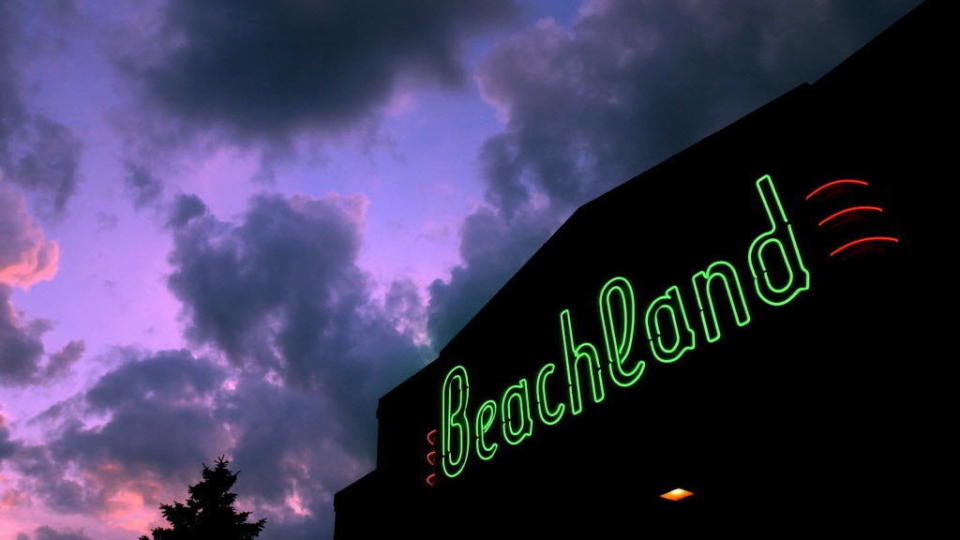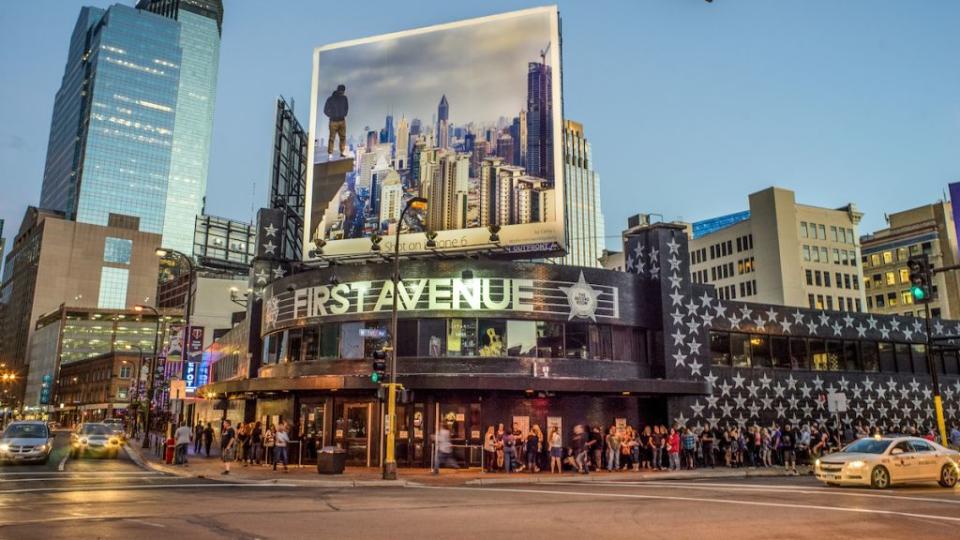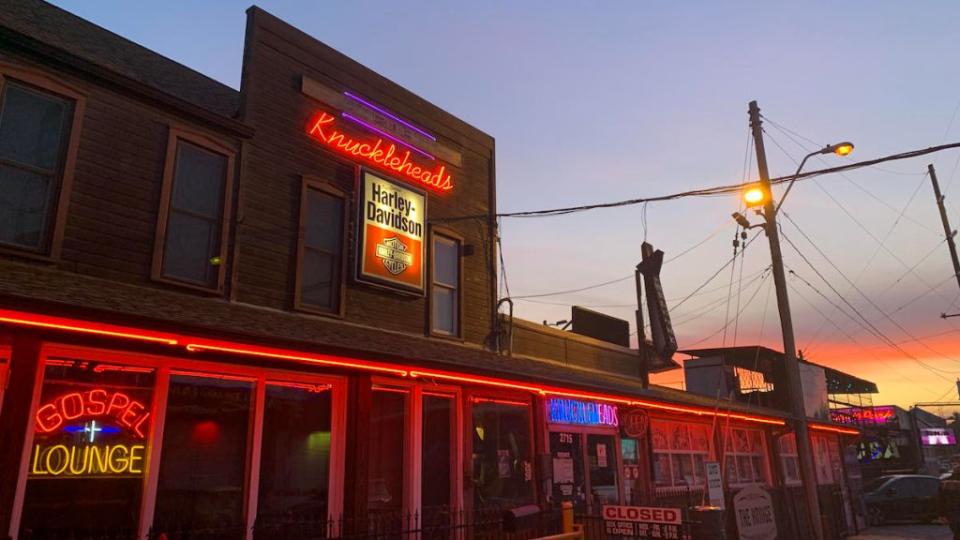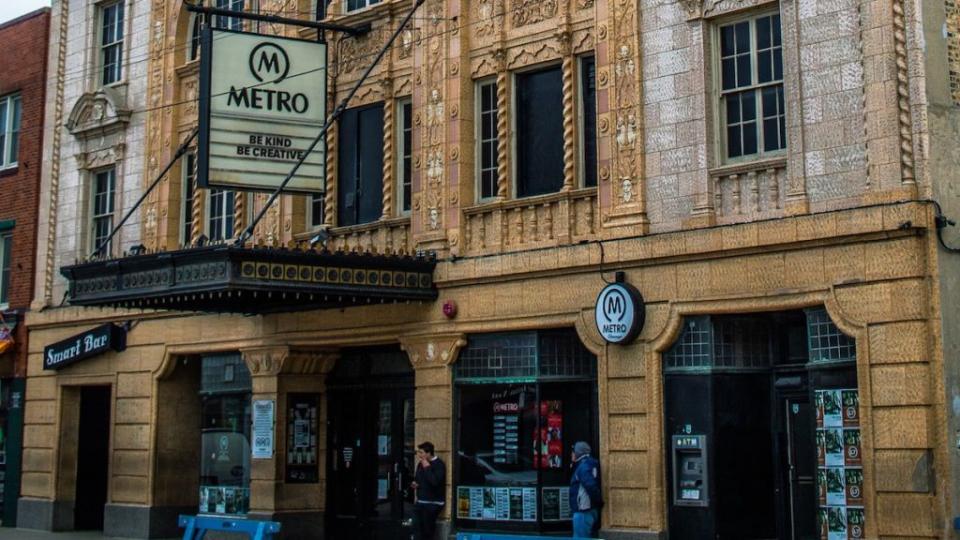Best Venues of the US Midwest: Hometowns of Consequence Finalists
The post Best Venues of the US Midwest: Hometowns of Consequence Finalists appeared first on Consequence.
Before nominations closed, live music fans across the country submitted 1,300 local venues to our Hometowns of Consequence initiative. After tallying the votes, we narrowed it down to just four per region, and now we’re shining the spotlight on those selected finalists. Now that we’ve covered the Southeast, Northeast, and West, it’s time to give the floor to our Midwest finalists: Ohio’s Beachland Ballroom and Tavern, Minnesota’s First Avenue/7th St. Entry, Missouri’s Knuckleheads, and Illinois’ Metro.
Each venue answered our curated Q&A, sharing memories of favorite shows and stories from their respective communities. In addition to highlighting the venues themselves, we also want to give props to the people who make these spaces more than just a building, those working at all levels to keep live music alive.
Voting for our Hometowns of Consequence winners will continue through October 21st, with the winners to be announced in the weeks thereafter. Cast your ballots using the widget below — but make sure to scroll down and read the venue Q&As first! Remember to share your unique referral code on social media using #HometownsOfConsequence for a chance to win discounts at the Consequence Shop and free tickets to your favorite venue, and check your email to validate your vote.
The Beachland Ballroom and Tavern

The Beachland Ballroom and Tavern, photo courtesy of venue
Location: Cleveland, Ohio
Capacity: 148/500
Opened: 2000
Website
Responses from: Ryan McGrew, Sound Tech
What’s a personal favorite memory you have from your time at The Beachland Ballroom?
The first time IDLES played in the tavern is definitely a favorite memory of mine. The band was so happy to be playing here and expressed wanting to one day play the ballroom (little did we know at the time, they’d sell it out the next year). IDLES climbed on stage that night and lit it up from the start with “Heel/Heal.” All of a sudden, Joe starts talking to a girl in the audience who couldn’t have been more than 15 years old, and she asks him if she can sing “Well Done.” He invites her up and she kills it, meanwhile Joe’s standing side stage, jaw dropped, and when she finished, Joe said, “Well, I guess I’m looking for a job in Cleveland.” It was awesome.
From your job’s vantage point, what makes Beachland special?
Honestly, I think it’s the staff here. We’re less like employees and more like family. It shows in our work and the way we interact with bands and customers. We aren’t just here because it’s a job; we actually really care for music and the community that surrounds it. Everyone that works at Beachland has great musical taste. Everyone is different from each other, but they all realize what is good. I often go to one of our managers, Matt Fields, when I’m stumped on what to play and ask him. He’s never pointed me in a bad direction.
Who are some of the “hero” artists who play at Beachland, consistently bringing in the crowd and putting on a great show?
OH SEES come to mind immediately. They play every year, always sell out, and book a year in advance — plus it helps that John Dwyer is a really cool guy. Dale Watson is another artist that just keeps bringing the hits and is the reason we have Lone Star beer. From Tupelo, we’ve got Paul Thorn, who has a loyal following, and he’s got the best sense of humor. Tab Benoit keeps on coming and, honestly, between him and the rest of the band, it’s one of the best after show hangs I’ve ever had. Then you have Ty Segall, who brings multiple projects to Beachland and is simply the nicest guy you’ll ever meet.
What was the initial reaction when IDLES came out with the song “Beachland Ballroom?”
I literally cried. It was such an important moment for me. I worked so hard to make sure each show was special for them, and they wrote a song about that experience. Watching [their guitarist] climb across the audience in the ballroom while playing guitar was especially rewarding, because the 80 people at that first show just turned into a sea that carried him out to the middle of the floor in the ballroom.
Being a sound tech, is there anything special about the acoustics of Beachland that stands out?
We have a very live room. You walk in and immediately go, “Oh, this is my high school gymnasium.” We’ve treated the back wall and ceiling, but the room still has a natural reverb and delay that, once you put bodies in, the building tightens up and really creates our sound. We recently got a new D&B rig in the ballroom, so that helps too, I guess. As far as the tavern goes, the stage is less than a foot off the ground and people can kind of wrap around it. I watch people stand behind the drummer all the time and just stare at whatever they are doing.
First Avenue/7th St. Entry

First Avenue/7th St. Entry, photo by Darin Kamnetz
Location: Minneapolis, Minnesota
Capacity: 1,500/250
Opened: 1970/1980
Website
Responses from: Conrad Sverkerson, Stage Manager
What’s a personal favorite memory you have from your time at First Avenue/7th Street Entry?
Definitely a favorite working memory was Cheap Trick doing three nights, and the second night, Aerosmith was in town shooting a video or something, and they called and asked if they could come to the club to see the show. We said, “Yeah, for sure.” That night, we were all watching from backstage, and they (Cheap Trick) were awesome. I think they were playing the album Heaven Tonight. So, the Aerosmith guys were all watching, the Cheap Trick guys come off stage, and they’re about to go back up for the encore, and Aerosmith joined them. It was great. I think they played “Train Kept a Rollin’” and Rick Nielsen said, “Wow, I don’t think we’ve ever all played together before.” The next night wasn’t nearly as good as night two.
Before I worked there, my roommate and I were going to see The Jayhawks play in the Entry, and there was a huge line around the club. This was probably in 1986 (I started in ’88). We couldn’t find out why there was such a big line, and then [we] learned Prince was going to play in the First Avenue main room. We went to the Entry, there were about 10 people in there, and the guy working the crossover door recognized me. I didn’t work there yet, but he knew me and he asked if we were members, and I said “No.” And he said, “You should be,” and let us through. They did Sign o’ the Times that night.
The first time I went to First Avenue was 1976, Bryan Auger’s Oblivion Express. Me and my friends were all into jazz fusion. We were all underage, but we got in. Everybody always asks about your best or favorite show, but I like to ask people about their first show.
Who are some of your favorite local artists that play at First Avenue/7th Street Entry. How have they become part of the venue’s/community’s fabric?
I am biased to the locals, for sure. The first big shows I worked there as a stage manager was with Soul Asylum. They were really starting to pop, and those will always be special to me. I’ve always been a huge Jayhawks fan, and the Westy’s (Run Westy Run). I started in ’88, so I didn’t work many of The Replacements shows in the First Avenue main room, but they did a reunion show I worked — maybe it was the 25 year anniversary. I saw them play a bunch in the main room and Entry (7th St Entry). And of course Hüsker Dü. Anything of Bob’s (Mould) projects, I love.
What do you want artists and fans to feel upon walking into First Avenue/7th Street Entry for the first time?
I want people to put away their phones and just take it in. There’s a vibe in the room, for sure. It’s a special place, as far as seeing music and hearing it. The majority of artists, they love being there and they love doing it. You feel a connection to the people. So, the people should try to feel that connection to the artists too.
We’ve got to ask about the wall of stars. Are they all bands who’ve graced your stage? What’s it take for a band to get their own star?
Ha, I stay out of the star business. There was one person who got a star before they played the club, Fiona Apple! The day we gave her a star for the main room, she had to cancel. Adele was the same thing. She was really excited to play First Avenue, she knew all about it, but she went up for soundcheck, and they had known it might not work. She went to the doctor, and they ended up canceling that show and the whole thing (tour). It was really a heartbreaking moment.
Note from First Avenue: Nearly all stars celebrate artists who have played on the First Avenue or 7th St Entry stage. There are a few notable exceptions, including Conrad’s brother, Billy Sverkerson, who was a long-time employee of First Avenue and passed in 2010. Conrad himself has a star on the building, as do a few other non-musicians who are a seminal part of First Avenue’s history. How you get a star, remains a mystery.
Based on those stars, are there any you personally remember or have experience working with/seeing at the venue?
Lot of times, I’ll find myself walking around the building saying to myself, “Yes, yes, yes, yes, yes, yes, uh, no.” And then, “Yes, yes, yes, yes, yes, oh, no,” as I pass the stars. There’s more that I have seen than I haven’t. In the past 35 years, I’ve probably seen more shows in the main room than anyone else, I think.
Knuckleheads

Knuckleheads, photo courtesy of venue
Location: Kansas City, Missouri
Capacity: 75/300/600/1,300
Opened: 2001
Website
Responses from: Frank Hicks, Owner
What’s a personal favorite memory you have from your time at Knuckleheads?
Some of my fondest memories are all the times Leon Russell played here. We got to visit and occasionally go to lunch or early dinner. Leon was a very talented and funny man. He was one of my first concerts that I paid to go see. It was Mad Dogs and Englishmen. There are so many more artist that I became friends with, and that makes owning a music venue very special to me.
What makes the Kansas City music and arts community special?
Well, that’s a good question. I think Kansas City is a hub where artist pass going east or west. And having a venue that cares about them and makes a home in Kansas City is important to them.
How can your community further support the venue?
We have all genres of music: old time folk, bluegrass, blues, rockabilly, and indie. From Sons of the Pioneers to CeeLo Green. So, I think we offer a wide variety of entertainment to suit almost anyone’s needs.
How would you describe the style and feel of Knuckleheads to someone who has never been before?
It’s a music complex with four stages and a cool vibe, like it’s been here forever. A real homey feel. Like having all your friends over to a big backyard party.
What are some changes you’ve seen in the music industry during your time at Knuckleheads?
Well, we’ve seen several new artists come up and make a large splash. I am reminded of artists like Sturgill Simpson, Jason Isabell, Whiskey Myers, Blackberry Smoke, Cody Jinks, and Tyler Childers. They all played here at Knuckleheads and moved to large arenas.
Metro

Metro, photo courtesy of venue
Location: Chicago, Illinois
Capacity: 1,100
Opened: 1982
Website
Responses from: Joe Shanahan, Founder of Metro, smartbar, and Gman Tavern.
What do you want people to feel upon walking into Metro for the first time?
The sense of community is something we all share here at Metro, rooted in our common ethos of music, arts, and culture. We diligently strive to nurture and support this feeling of community. Our aim is to always promote and celebrate diversity, while also supporting local, regional, and national artists. This is a message we enthusiastically want to convey to our visitors.
What are some changes you’ve seen in the music industry that have impacted the way you operate?
The changes I have seen with music evolving have been far and wide as far as tastes and trends go, and I have always wanted that reflected in our programming. For example, when we opened 40 years ago, we stood witness to the rise of punk, metal, hardcore, industrial, alternative, hip-hop, and so much more, and we have now become one of the few remaining independently owned and operated music venues in the country.
Is there anything about your community that makes maintaining a venue particularly special, challenging, or unique?
Being a part of the community in which Metro resides in is a truly unique and special aspect of our venue’s identity. Our weekly “Queen! Parties” at smartbar alongside its “All Building” events at Metro have purposefully established [themselves] as a cherished local safe haven for the LGBTQ+ communities, providing a welcoming and inclusive space.
We actively organize numerous events with a civic focus, emphasizing leadership and fundraising. What sets our community apart is our unwavering commitment to giving back whenever and wherever possible, with initiatives spanning from supporting a local food pantry to nurturing youth music programs and providing essential mental health services. We proudly collaborate with a network of community organizations, including Darkest Before Dawn, Hope for a Day, Nourishing Hope, Intonation, Uniting Voices of Chicago, ACLU for our Chicago Loves Drag events, and various trans rights organizations, just to name a few. It’s a community that deeply understands and values the transformative power of giving back, making our presence here all the more special and meaningful.
What’s it like being a part of the Chicago music scene, and what does Metro do to stay connected to it?
Chicago’s arts and music scene has always been inspiring. It allows us at Metro to think local, and act global, which I always like to say is one of our motivating factors that keep us driven to do what we do. We honor the past that brought us to the present. We also honor the art-driven communities here that believe that music and culture come first.
Are there any artists you remember getting their start at your venue before going on to become bigger names, and what were those early shows like?
For over 40 years, Metro has been dedicated to providing a platform for new and emerging talent. Our inaugural Metro show in 1982 featured an up-and-coming college band at the time, R.E.M., which we did not realize that night, would mark the beginning of a legacy for Metro that has prevailed for more than four decades. Since then, Metro has been a host to a multitude of up-and-coming artists, including Chance the Rapper, Foo Fighters, Jack White, Jamila Woods, Liz Phair, Lizzo, Metallica (who returned in 2021 for a surprise 40th anniversary show), Pearl Jam, Shirley Manson, Smashing Pumpkins, St. Vincent, and so many more.
The energy within our venue is consistently palpable. We are always invigorated by the crowd’s reactions and enthusiasm, and sometimes, as an artist is on the brink of breaking into the mainstream, you can sense that the room is witnessing a very special moment or performance; the crowd almost knows the artist they are seeing is about to propel into greater heights after that very night.
Best Venues of the US Midwest: Hometowns of Consequence Finalists
Jonah Krueger
Popular Posts
AC/DC Rock Power Trip Festival for First Show in Seven Years: Photos + Video
Masters of the Air, Band of Brothers Sequel Series, to Premiere in January 2024
Sharon Osbourne Says She and Ozzy Still Have an Assisted-Suicide Pact
Woman Confronts Staff at Whole Foods for Playing Tool Song, Calls It "Death Metal"

